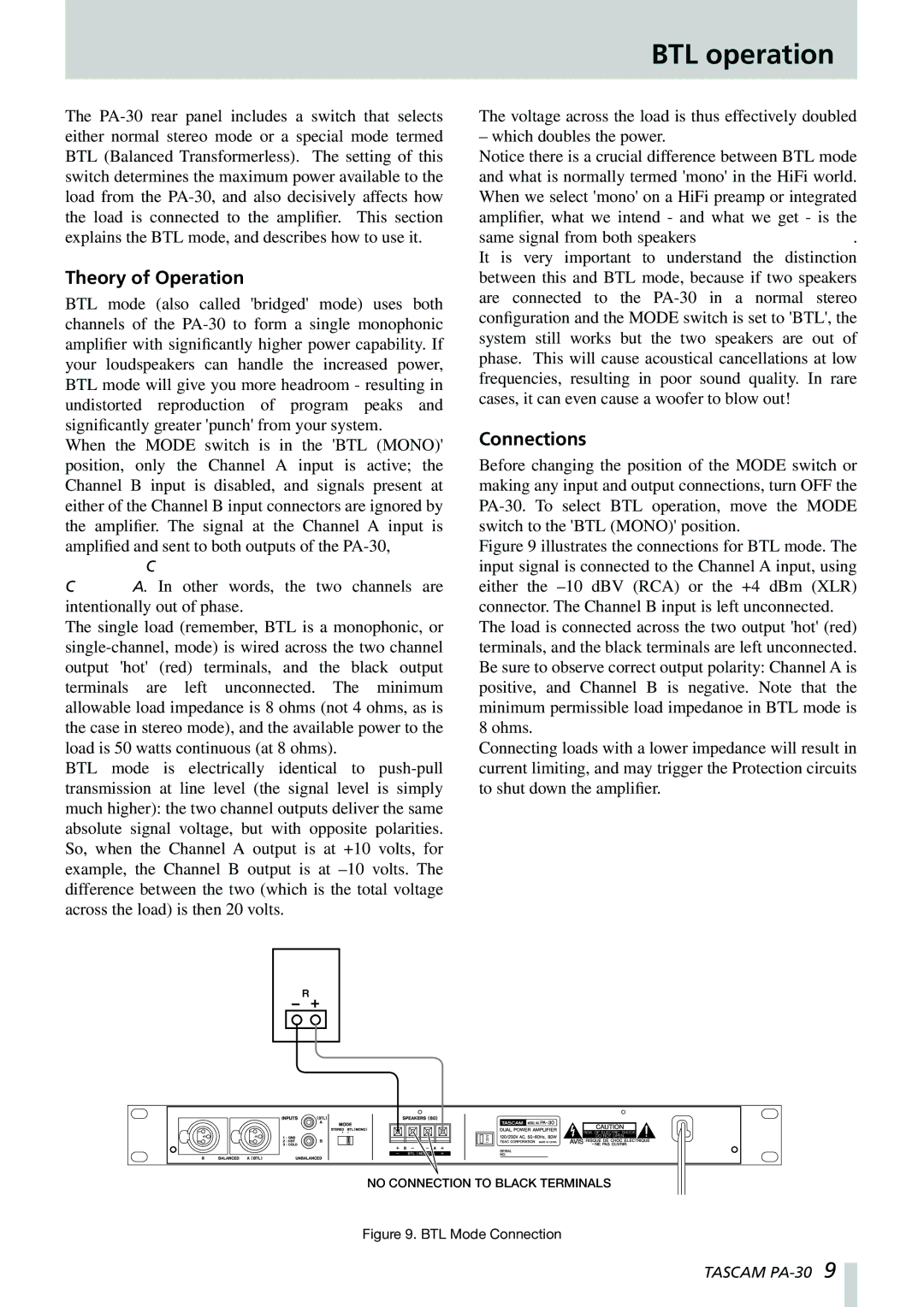PA-30 specifications
The Tascam PA-30 is a professional power amplifier designed to meet the demands of demanding audio environments. Known for its high sound quality and robust construction, the PA-30 is an ideal choice for both live sound applications and permanent installations.One of the standout features of the Tascam PA-30 is its power output. It delivers 30 watts per channel into an 8-ohm load, making it suitable for driving a variety of speakers in moderate-sized venues. Additionally, it can also handle 50 watts per channel into a 4-ohm load, providing the headroom necessary for high-energy performances and dynamic audio playback that requires extra power.
The design of the PA-30 emphasizes durability and reliability. Built with a rugged chassis, the amplifier is capable of withstanding the rigors of touring and frequent use in commercial environments. It also features a fan-less design, which minimizes noise and enhances the listening experience, ensuring that no distracting sounds interfere with the music or spoken word.
For connectivity, the Tascam PA-30 includes balanced XLR inputs, as well as RCA connectors that allow for various audio sources to be connected easily. This flexibility ensures that the amplifier can integrate seamlessly into different audio setups, from small gigs to larger events.
In terms of technology, the PA-30 is designed with advanced thermal protection, ensuring that the unit operates safely even during extended use. This feature prevents overheating, which can lead to unexpected interruptions in performance. Moreover, the amplifier is equipped with short-circuit protection, providing peace of mind and safeguarding connected equipment from potential damage.
The user interface is straightforward and intuitive, featuring rotary knobs for volume control and basic EQ adjustments. This simplicity allows audio engineers and operators to make swift adjustments during live shows without any hassle.
Overall, the Tascam PA-30 stands out for its combination of performance, reliability, and user-friendly design. With its impressive fidelity and robust features, it is an excellent choice for anyone looking to enhance their audio systems, whether in live sound situations or in fixed installations. This amplifier continues to be a trusted option for audio professionals around the world, ensuring quality sound reproduction in a variety of settings.

